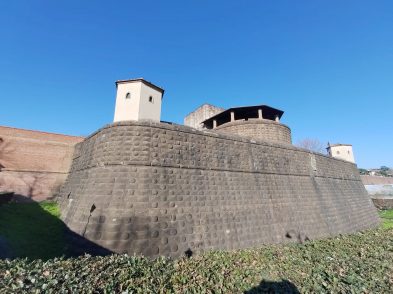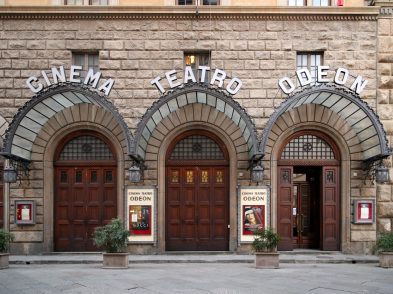One of the most emblematic photographs of the socio-political events that occurred in twentieth-century Italy is that of the crumpled body of statesman Aldo Moro lying dead in the back of a battered, dark red Renault abandoned on via Caetani in Rome, halfway between the headquarters of the Christian Democratic Party and that of the Italian Communist Party.
On March 16, 1978, Moro had been kidnapped on his way to work in a bloody commando raid. The attack, which left his five bodyguards dead, was organised and carried out by the Brigate Rosse (Red Brigades), an extreme-leftwing Italian terrorist group. Despite a nationwide search, Moro was kept hostage for 55 days before he was finally assassinated.
Although the Red Brigades’ stated motive for the kidnapping was to secure the release of 13 of its leaders who were facing trial, the date of Moro’s abduction was carefully chosen. It was the day when the Compromesso Storico (‘Historic Compromise’) between the Christian Democrats and the Italian Communist Party was to become a reality.
The Compromesso Storico was engineered by Moro, who was a major exponent of the centre-left stream of the Christian Democrat Party. Its objective was to permit the Italian Communist Party to return to government for the first time in over 30 years. However, the Red Brigades completely opposed this idea, as it interfered with the declared aim of spearheading an armed Marxist revolution in Italy, led by a ‘revolutionary proletariat’.
Moro believed that a coalition government with the Communists was necessary because throughout the 1970s the Communist Party had been inexorably gaining electoral ground. It had, in fact, won 34.4 percent of the vote in the 1976 elections. Moro maintained that only a government of ‘national solidarity’ could bring stability to the country.
Born in Maglie (near Lecce, Puglia) in 1916, Moro studied law. Thanks to his strong Catholic upbringing, he began his political career in the ranks of the Federazione Universitaria Cattolica Italiana at the University of Bari. In 1945, Moro, by then a law professor, was elected to the Constituent Assembly and was the youngest of the 18 members of the committee that drafted Italy’s new constitution. In 1948, he was elected to the Chamber of Deputies on the Christian Democrat ticket.
Over the years, he held various Cabinet posts, including minister of Justice, through which he introduced sweeping prison reforms. He also served as secretary of the Christian Democrat Party and soon became one of the longest-serving post-war prime ministers, a post he held five times.
Although it had negotiated with the Red Brigades in other situations, when Moro was kidnapped, the government refused to deal with the extremist terrorist group, claiming that to do so would only invite future attacks. In a series of letters sent to government leaders, Pope Paul VI (who at one point offered himself in exchange for Moro and who personally performed Moro’s funeral rites), newspapers, and his family, Moro appeared to be pleading for his life, calling on the government to meet his captors’ demands. Much mystery, controversy, and speculation surrounds the letters. Were they incomplete? Was Moro sending cryptic messages through them? Or had he written them under considerable duress?
The fate of Aldo Moro has profoundly affected the Italian collective psyche and, since his death, conspiracy theories have continued to flourish, especially in the light of the government’s intransigence in seeming to do nothing to save him. At the time, investigative journalist Mino Pecorelli believed that the Gladio, an underground anti-communist organisation directed by NATO, was behind Moro’s death. He argued that the United States was contrary to the Historic Compromise because it could have caused Italy to withdraw from NATO, thus weakening America’s strategic role in the region. The publication of accusations like these led to Pecorelli’s assassination just one year after Moro’s. The then Prime Minister, Giulio Andreotti, was eventually indicted and tried for having commissioned this crime. Although sentenced to 20 years’ imprisonment, he was subsequently cleared on appeal.
Another theory was that the secret service members of the Italian Masonic lodge called Propaganda Due (known as the ‘P2’) interfered with the investigation or intentionally failed to divulge the location of where Moro was being detained. Yet another theory suggested that the Red Brigades had been infiltrated and manoeuvred by the CIA.
The public outrage was, however, so strong following Moro’s death that the police and security forces launched a nationwide crackdown n the Red Brigades. The group quickly lost what very little support it had enjoyed. In 1980, over 10,000 far-left activists were arrested, and several hundred others chose self-imposed exile in France and South America. In exchange for lighter prison terms, many of the imprisoned leaders, including Faranda, Franceschini, Moretti (Moro’s killer), and Morucci, disavowed their political doctrine and turned their comrades into the police. Whilst today there are still occasionally sporadic violent attacks by isolated cells of the Red Brigades, this crackdown, Moro’s assassination, and increased police collaboration, effectively brought an end to the infamous ‘Anni di Piombo’ (the Years of Lead) of the 1970s, during which the Red Brigades and other extremist organisations engaged in fire-bombings, kneecappings, abductions, and assassinations of politicians, judges, law enforcers, journalists, and anyone else who effectively opposed their so-called revolutionary ideals.







